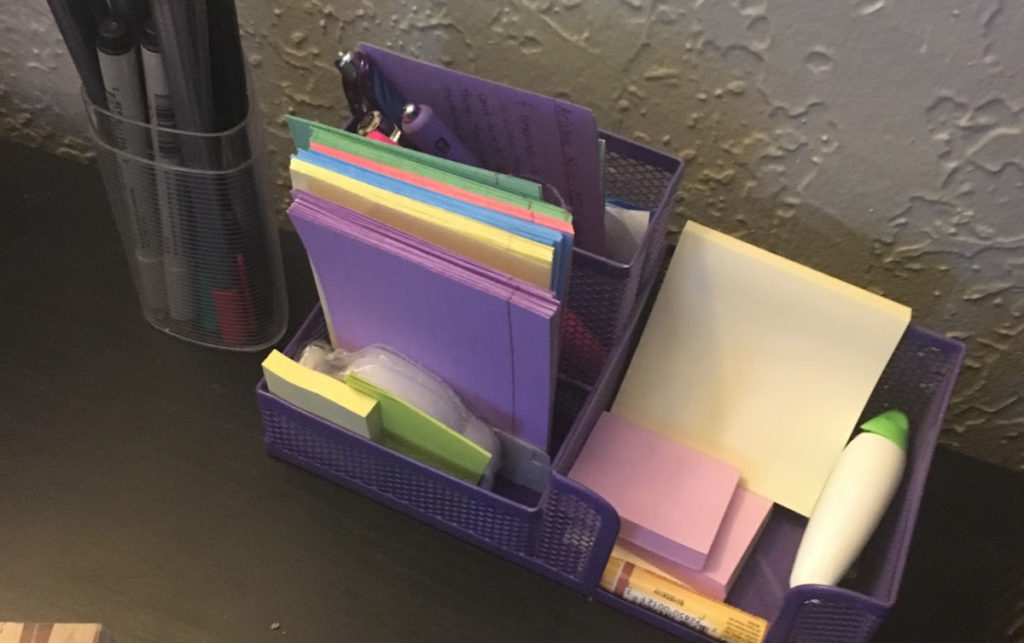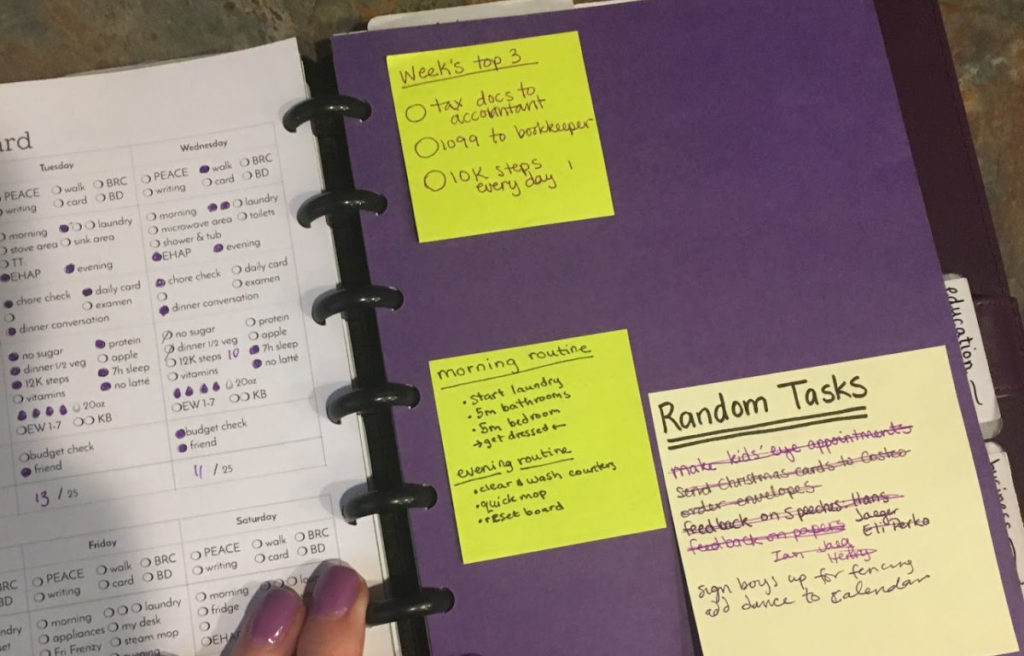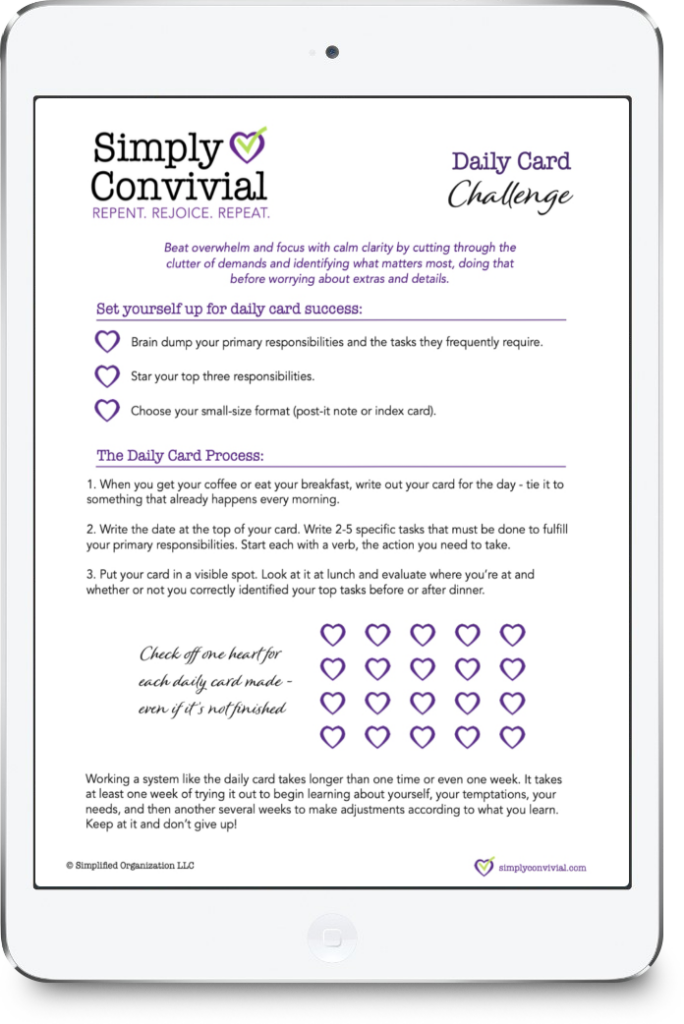
What's Working Now: Post-It Planner
Ah, the constant struggle to find or create the perfect planning system. How many of us spend more time tweaking and changing our planner than actually using it? A post-it planner has been my personal solution for the last few months, and I want to share how it’s working for me.
We spend so much time playing with our planner that we begin to think that is using it.
But we’re actually using our planner when what’s written there – whether it’s color-coded or not – is what we look at and do. Our planner helps us make wise choices about what to do next. If it doesn’t keep track of our to-do list and if we don’t look at it, we aren’t using a planner, no matter how much time we spend writing in it and decorating it.

On the flip side, planners need to be adaptable, because life changes on us. We can’t plot out our week in a planner page and then just make it all happen. It never works because that’s not the way life works. Through a combination of overplanning, overzealous expectations, and unforeseen life circumstances, our plans do need adjusting and tweaking all the time.
Hence, the post-it note planner.
In the “What’s Working” series, I share what I’m currently doing and using to keep things (mostly myself) humming along. Lately, I’ve been enamored of post-it notes in my planner, and I keep a ready stock in several key locations so I can quickly add them as needed.
I have seen people whose planners are simply boards on which to store sticky notes. Everything is contained on post-it notes in the planner. That is not the way I have been using planner sticky notes, though.

I think of my planner sticky notes like amendments, side notes, brain dumps, and extras. I have several key places to keep them, but the core of my planner remains my weekly dashboard and interval plan – printed and worked from.
The post its hold those tasks that need to be visible, remembered, tracked, but that don’t make it to the printed regular routines or the top 3 priorities for the day.
Here are the three ways I use post its in my planner:
Post-It Planner: Random Task Tracking
I like to organize tasks and thoughts and information by vocation because categorizing helps me think through things. So in my planner, I have headings per vocation and a sticky note for each.
There are no rules about what goes on these notes. They’re not permanent. I usually change them every week, so they’re just a catch-all. It allows me to keep thoughts, goals, and tasks in front of my face without being overly committed to them.
If something comes up, I have a quick place to turn to brainstorm, write a reminder, or send my future self a note.

Because I look at these pages in the evening when I go over my plans and during my weekly review, I know I will see what I write here. During my weekly review I can write the information again if I still need it, add it to the appropriate to-do list or filing place, or toss it.
It’s open-ended enough and flexible enough to do whatever it is I need it to do at the time – and that’s what allows it to work for me.
Post-It Note Planner: Daily To-Do List
I’ve written before about how a short daily to do list is my secret sauce planner hack, and right now that looks like a post-it planner. Yes, a single post it is really all the planner we need, as long as we also have a working calendar.
On a piece of cardstock (purple, of course) next to my printed weekly dashboard, I keep a post it with my daily card, my weekly top 3, and a running list of random, small to-dos to fit into the margins of the day.

Honestly, I find a lot of satisfaction in throwing these post its from my planner away daily and weekly. And then I get the ability to start fresh once more, which is a small win that makes me like my planner process – and when you like something, you tend to use it more and better.
Post-It Planner: Quick Brain Dump Spots

I also always try to keep a blank post it or two on the inside on planner so that all I have to do is open the front cover and I have a spot to jot down anything, no matter how trivial or vital, no matter where that information needs to end up in the end.
Again, because I see these notes daily and either in the evening or at least at my weekly review ensure the information goes where it belongs, a quick spot to dump an idea, a task, a grocery item, a reminder – anything at all – makes it that much more likely that I really will write it down, right away.

Get the important things done each day.
Take the daily card challenge and become more effective in your home.

